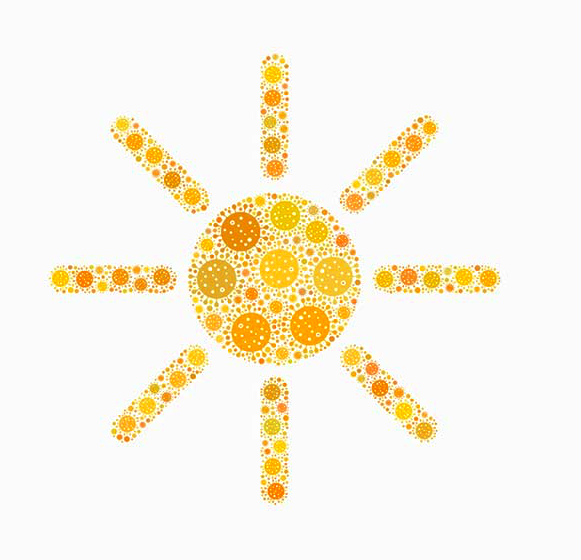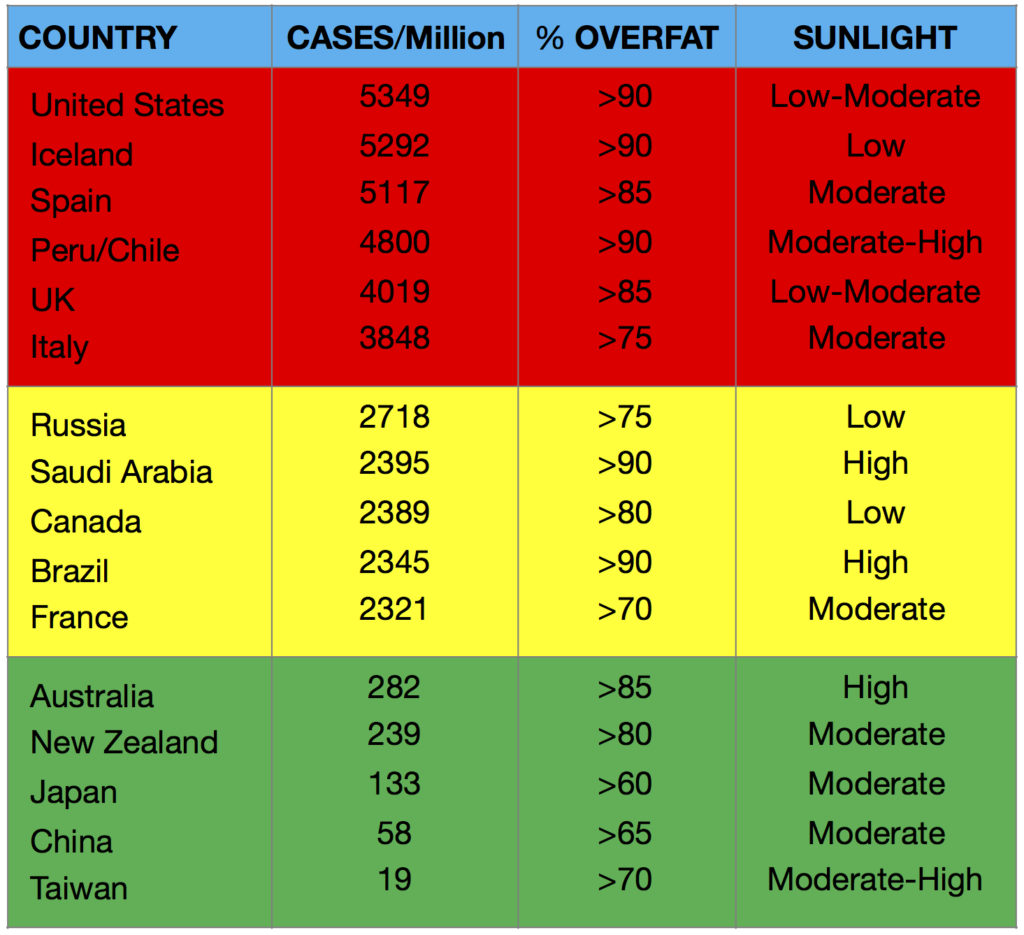
U.S. passes Iceland to become the world’s worst country for confirmed COVID-19 cases per million people.
As we accumulate more data on COVID-19, the one thing we know for sure is there remains much we don’t know. However, ongoing analysis allows a snapshot of health trends and, in particular, who is most at risk in a variety of countries.
Combined with our current knowledge about lifestyle and immunity, this data provides an important insight not being provided by public health officials or the media.
Two key factors that increase the risk of infection, based on confirmed cases include:
- Excess body fat, and related illnesses such as heart disease, diabetes, cancer, etc.
- Low vitamin D levels.
The chart below compares risk of infection based on COVID-19 cases per million people (not just total cases), with the prevalence of overfat, and sunlight (vitamin D potential).
Relationships between COVID-19 cases, overfat and sunshine in some countries.
Red = higher risk; yellow = moderate risk; green = lower risk.
While either problem alone is sufficient enough to increase the risk of infection, the increased prevalence of both overfat and low vitamin D can increase COVID-19 cases substantially. This is seen in the U.S., Iceland and other high-risk countries.
These risk factors also are a danger alone. For example, Russia has lower rates of overfat yet higher COVID-19 cases—over 90 percent of the population may have low vitamin D levels. Italy and Spain also are high risk for COVID-19 — people in these countries have significantly low vitamin D levels despite adequate sunshine, including 94 percent of those 65 years and older. This despite Italy’s relatively lower overfat prevalence compared to other Western countries.
Skin color also is a long-known risk factor in overfat and its downstream illness, with the prevalence increasing with darker skin, increasing the risk for COVID-19.
High, moderate and low health risk is a very good model for populations and individuals. It is a foundation in helping people begin to personalize their lifestyle using MAF methods that include food, exercise and stress regulation.
We can all lower our risk for chronic disease, physical impairment and infectious disease—including COVID-19—through healthier lifestyles. This includes healthy sun exposure and vitamin D dietary supplements. Being overfat is a primary risk factor, and also associated with low vitamin D, with sugar and refined carbohydrates the primary cause of excess body fat.
Improving lifestyle can not only protect against current and future infectious disease, but significantly improve overall health and fitness.
References
Ebadi M, Montano-Loza AJ. Perspective: improving vitamin D status in the management of COVID-19. Eur J Clin Nutr. 2020 May 12: 1–4. doi: 10.1038/s41430-020-0661-0.
European CDC data. https://ourworldindata.org/covid-cases#world-maps-confirmed-cases-relative-to-the-size-of-the-population
Maffetone P, Laursen P. The Perfect Storm: Coronavirus (Covid-19) Pandemic Meets Overfat Pandemic. Front Public Health. 2020 Apr 23;8:135. doi: 10.3389/fpubh.2020.00135. LINK PRESS RELEASE
Maffetone P, Laursen P. Revisiting the global overfat pandemic. Front Public Health, 25 February 2020. doi.org/10.3389/fpubh.2020.00051 LINK PRESS RELEASE









